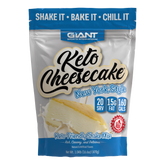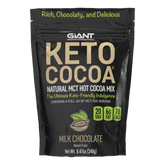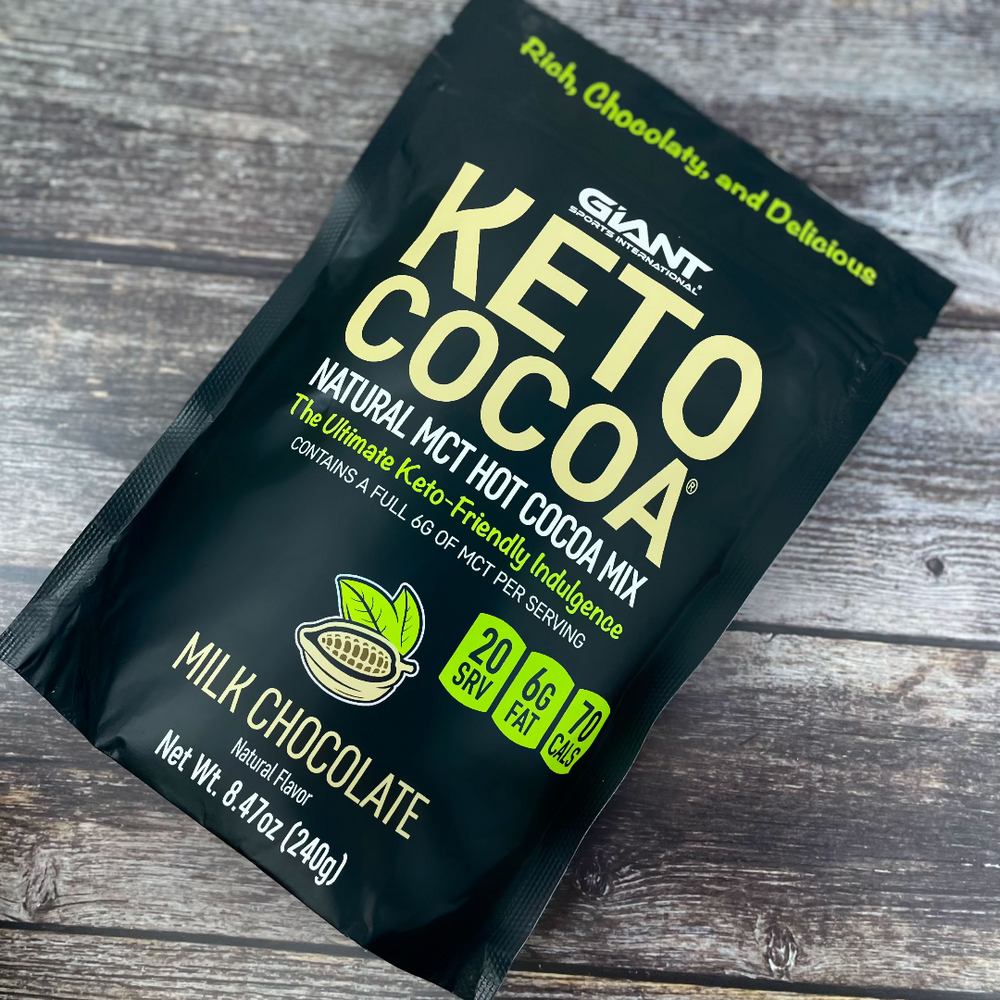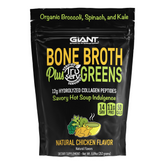Tricky Foods That Will Kick You Out of Ketosis

The ketogenic diet is quickly becoming one of the most popular ways to
lose weight and maintain a healthy lifestyle. Who doesn’t want to lose weight
and still be able to eat good food and feel full? You don’t need to count
calories and fat grams or keep track of points; all you need to do is learn
which foods you can eat and which ones are on the bad list. Although this
sounds simple enough, it is important to learn which common and not-so-common
foods will be sure to ruin your plans and kick you out of ketosis.
You probably already know that ketosis is achieved by eating fewer
than 10% of your calories in net carbs each day. This will allow your body to
run on ketones from fat instead of glucose from carbs. Essentially, your body
will use extra fat for fuel, thereby reducing how much of it you have. If you
have been following your diet and still aren’t seeing the results you expected,
take a look at the following information on foods that can kick you out of
ketosis.
Common Foods to Avoid
The keto diet is all about following a low-carb, high-fat diet so that your body will burn fat. There are many foods that you can eat, which is one of the best things about this diet. However, you need to be familiar with the foods that you’re not allowed.
Avoid the following foods when you are on the keto diet:
- Most fruits and fruit juices
- Starches and grains, including cereal, rice, and pasta
- All low-fat and diet products
- Beans and legumes
- All sauces and condiments that contain sugar
- Alcohol, but especially sugar filled alcoholic beverages
- Processed meats
- “Bad” fats such as mayo and processed vegetable oils
- Starchy vegetables such as carrots, sweet potatoes, and potatoes
- Sugar, including sodas, fruit juice, most desserts, and smoothies
When it comes to fruits, many of them are high in sugar and carbs. You
want to avoid bananas, apples, oranges, and pears and have small portions of
berries and tomatoes instead. Beans and legumes may have protein but their high
carb content makes them ones to avoid. Processed meats have additives and
hidden carbs so stick to fatty cuts of grass-fed and organic meat.
You are allowed to eat many delicious foods including unprocessed meats, cheese, eggs, most vegetables, nuts, and healthy oils. You can eat natural fats such as butter or olive oil. Replace your starches with veggies fried in butter and you will forget about them in no time.
Achieving and maintaining ketosis is all about learning what to eat
and what to avoid. Familiarize yourself with common foods to avoid and stay
away from them.
Foods You Wouldn’t Suspect That Will Knock You Out of Ketosis
So now, let’s look at the sneaky foods that may be interfering with your diet. If you have been sticking to your diet but the weight isn’t coming off, you may be consuming more carbs than you think. Your best bet is to avoid packaged foods altogether and stick to home-cooked meals. Packaged foods can be labeled as low-carb, when in fact they still contain enough carbs to kick you out of ketosis. Not only that, but some foods that are considered to be healthy may contain sugar. Look out for hidden carbs and review this list of surprising culprits that could kick you out of ketosis.
Meat and Seafood in Moderation
Although grass-fed meats and seafood are foods that you can eat, you don’t want to eat a lot of them. If you consume more protein than your body needs, it is converted to glucose, which will make it harder to get into ketosis. In addition, you should limit certain meats that contain higher carbs
Liver
Liver may be a great source of protein, but it has a higher carb count.
Processed Meats
Lunch meats, bacon, and sausage may contain preservatives, gluten, and sugar, which will add to your carb intake.
Processed Snacks and Juices
There are some “healthy” snacks and juices out there that may seem to be fine but many of them are full of sugar. Make sure that you check the nutrition label for ingredients. Sugar and other sweeteners are often added so don’t be fooled into thinking that your “Green Juice” is carb-free.
Certain Nuts
Some nuts contain healthy fats but there are a few that are high in carbs and you should avoid or limit them: Peanuts, Cashews, Pistachios, Chestnuts
Root Vegetables
Full of starch and grow underground at the base of a plant. They have a lot of carbs, which makes them more similar to grains than veggies. You want to avoid the following: Carrots, Potatoes, Cooked Onions, Parsnips, Sweet Potatoes, Yams
Sugar Alcohols and Low-Carb Sweeteners
Sugar alcohols are sweeteners that occur naturally in some fruits and vegetables; they can also be manufactured and added to processed foods. Avoid processed foods but also make sure to check ingredients as foods labeled “no sugar added” or “sugar-free” may contain sugar alcohols or low-carb artificial sweeteners that will kick you out of ketosis.
Condiments
Small amounts of condiments can add flavor to your low-carb meal but you must be careful not to use too much. The trick is that the condiment may appear to be low-carb but this is based on the serving size. Too much will be just enough to ruin your diet. Limit the following condiments that contain hidden carbs: Ketchup, Teriyaki sauce, Barbecue sauce, Salad dressings with sugar, Honey mustard, Steak sauce, Jams and jellies, Balsamic vinegar, Sriracha sauce, Tartar sauce

As you can see, there is a gray area with food and you need to educate yourself. Limit your use of condiments, be thoughtful about choosing not organic meats, and learn the many alternate names that disguise sugar. Some vegetables are good, such as broccoli, cauliflower, celery, and cucumber, but stay away from starchy root veggies. Remember that many fruits are loaded with (fructose) sugar and don’t believe that “sugar-free” is always really free of sugar. Follow these tips and these sneaky foods won’t disrupt your goals.
What to Look Out for When Eating Out
Eating out can be hard when you are dieting. Fortunately, you have
many options on the keto diet. You can actually enjoy your meal and stay on
track. The hardest thing is being caught by surprise. What should you order?
How do you know? Rather than being put on the spot at the restaurant, plan your
meal before you go. Here is a list of tips to keep your diet intact:
- Check the menu online before you go.
- Focus on fat, veggies, and protein; melt extra butter on top for flavor.
- Skip starchy sides such as bread, pasta, potatoes, or rice.
- Substitute salad for the side, or lettuce for burger buns.
- Be careful of sauces and order them on the side.
- Avoid desserts and stick to berries with heavy cream or a cheese plate.
- Skip the alcohol; drink water, tea, or coffee (no sugar).
- Mix and match: create your own meal with appetizers or substitutions
Giant Sports KETO COFFEE™ is a delicious, premium coffee beverage that is ketogenic diet & Paleo friendly while still satisfying the most discriminating coffee enthusiast. Check it out yourself!
If you check the menu online before you go, you can learn more about the carb and sugar count in many meals. It can feel uncomfortable to be that person who wants to ask for substitutions and mix up the menu but you should never feel guilty for putting your health first. Skip the bread, substitute a salad for starchy sides, and ask for your sauces on the side. Make sure that you avoid most desserts but you can enjoy a bowl of berries with heavy cream. Remember that you are the customer and dining out should be a pleasant experience. Order the foods that are right for you and enjoy your meal.
It’s easy to think of it this way. When you’re paying someone you are the boss. Does your employer pay you? Well, they get to call the shots. When you’re paying someone else to be considerate and respectful but know you ARE paying. And you shouldn’t be paying if you want food service that is done half as good as it can be.
How to Get Back on Track Using Exogenous Ketones as a “Priming the Pump Method”
The keto diet is all about reducing your carb intake so that your body gets its energy by burning fat instead of converting glucose. Your body produces endogenous (“endo” = from within) ketones when glucose isn’t available but exogenous ketones come from an outside (“exo” = from outside) source and they can prime your body for ketosis. If you have fallen off track, you can get your body back into ketosis much more quickly than you think by using the “priming the pump method”.
There are two kinds of exogenous ketones: salts and esters. Ketone esters are in a raw form and have nothing added to them but they can be expensive. Ketone salts, on the other hand, are less expensive and are considered a great catalyst for achieving and maintaining ketosis. They can make your quest for ketosis easier by decreasing flu-like symptoms and irritability. Not only that, but they can reduce inflammation and increase your muscle tone.
The top benefits of exogenous ketones are increased energy, improved focus, better appetite control, and weight loss. When you add exogenous ketones to your diet plan, you can achieve ketosis more quickly and reduce the side effects of the diet that might make you cheat or quit. You are essentially stimulating your body and pushing it into ketosis now. Your body has relied on carbs and glucose for energy for your whole life so achieving ketosis through diet alone takes time. Exogenous ketones can speed up the process for you.
Whether you are just beginning your journey into ketosis or you fell
off the wagon and splurged on a high-carb meal over the weekend, exogenous
ketones can help you. By pushing your body into ketosis more quickly, you will
avoid the early stages where you lack energy or experience flu-like symptoms.
Exogenous ketones will get your body started so that your low-carb, high-fat
diet will be successful right away.

It is important not to beat yourself up for having that large plate of spaghetti last night. It happens to the best of us. You might feel the effects of all those carbs but you can get back on track. Use the priming the pump method to jump-start your ketosis by adding exogenous ketones to your diet. It will be easier to get back on track and you will be back in ketosis in less time with fewer inconvenient symptoms.
Main Points to Look Out for When Searching Ingredients on Food Packages
It can be overwhelming to look at the food labels in the grocery
store. Just reading the list leads to all kinds of other questions. Should you
count the total carbs or is it the net carbs? Does sugar-free really mean no
sugar? Learning how to answer these questions more easily will help you choose
the right foods and spend less time at the grocery store.

- Counting Carbs: The total carbs will be listed but you need to calculate the net carbs. If the package shows total carbs of four grams, you will subtract the dietary fiber and sugar alcohols to find the net carbs. Now you will know both the total carbs and the net carbs. You count based on what’s right for your body.
- Check the Serving Size: The carbs and sugars in the package are based on the recommended serving size so a box of cereal that has 22 grams of carbohydrates but a serving size of ¾ cup actually contains more carbs in the box than you might think at first glance. Be sure to check the serving size.
- Look at the Ingredients: Many foods are labeled as “sugar-free” or “no sugar added.” However, when you read the ingredients, you will see sugars on there. Sugar alcohols can be added as sweeteners to packaged foods so be sure to look for them.
- Watch Out for Low-Carb Ingredients: These might include artificial colors and flavors, harmful additives such as potassium and bromate, and harmful non-caloric sweeteners. These ingredients are not good for you and your body doesn’t need them.
- The Macronutrient Ratio: You can use a keto macronutrient calculator to find the ratio that is best for you. Macronutrients include fat, carbohydrates, and proteins. Keep in mind that the number of grams may be the same but the number of calories will differ. Fat has almost twice the calories of protein or carbs.
- Stay Away If Sugar or Starch Is One of the Top Five Ingredients: As a general rule if sugar or starch is in the top five ingredients, it will have too many carbs to be keto-friendly. You need to familiarize yourself with the different names that sugar hides behind, such as sucrose, dextrose, lactose, glucose, molasses, cane juice, and many others.
The bottom line is that if you take the time to learn how to read the
ingredient list before you go to the grocery store, you will have a much easier
time deciphering the labels. Being familiar with how to decode the label will
get you through the store in less time. Do your homework before you shop and
you will feel good about your choices.

How to Know When You’re Out of Ketosis
If you go out and have a full plate of pasta with a side of bread, you can fall out of ketosis before the morning. If you continue with a high carb intake, you can experience obvious symptoms that you have fallen out of ketosis. However, if you put that meal behind you and jump back onto your diet, you may not experience any symptoms. So how do you know if you are out of ketosis? Read on to find out.
- Sugar Cravings: Sugar is incredibly addictive and studies show that the longer you resist it, the more you crave it when you go back to it. If you are feeling intense cravings for sugar, you may be out of ketosis.
- Sugar Hangover: Your sensitivity to sugar increases when you are on the keto diet and as it makes its way back through your bloodstream, you may experience any of the following symptoms:
- Dizziness
- Fatigue
- Lightheadedness
- Irritability
- Difficulty concentrating
- Bloating: A big meal heavy in carbs can leave you feeling bloated and lethargic.
- Keto Flu Symptoms: You can develop negative side effects when you enter ketosis and you can enter it again when you fall out. Signs are the following:
- Stomach pains
- Brain fog
- Dizziness
- Nausea
- Irritability
- Muscle soreness
- Constipation
Another general side effect you could expect is the keto rash.
As you can see, there are many different symptoms that will help you know that your body has fallen out of ketosis. However, don’t give up. You can get back into ketosis again and the symptoms will go away. The most important thing to remember is the choosing the keto lifestyle is a journey, not a short trip. If you take a detour, you can get back on track. Stay committed and you will be back in ketosis in no time.












